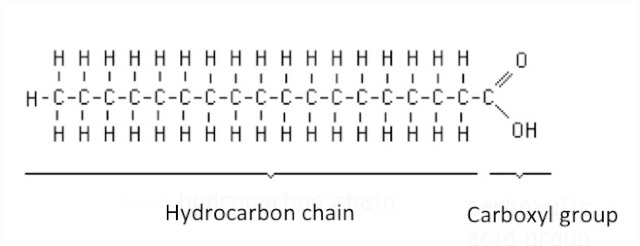Fatty acids are a class of lipids (or fats) that consist of a hydrocarbon chain terminating at one end in an acidic, carboxyl group. In the body, they are often bound (‘esterified’) to other molecules to form ‘complex’ lipids, like phospholipids and triglycerides. In the stratum corneum, unbound or ‘free’ fatty acids are one of the 3 key classes of lipids that form the lamellar membranes of the stratum corneum. The other two are cholesterol and ceramides. Ceramides are another type of complex lipid which possess esterified fatty acids.
Linoleic acid
The fatty acids that make up the lipids in the lamellar membranes of the stratum corneum have long chains of carbon atoms. Most are more than 16 carbons in length and some are as long as 34 carbons in length. The free fatty acids are mostly in the 16 to 18 carbon range, while the very long chain fatty acids are present as esters in certain ceramides.
One of the critical fatty acids for the lamellar membranes is linoleic acid. Linoleic acid is 18 carbons in length and possesses two double bonds, at the n-6 and n-9 positions. It is an ‘essential’ fatty acid, meaning that our bodies cannot synthesize it and we need to obtain from the diet. Linoleic acid is also essential to the functioning of the skin barrier, and a dietary deficiency of this lipid can result in a severe impairment of the permeability barrier. Fortunately, essential fatty acid deficiency happens only rarely, because many foods of plant origin, and particularly corn, sunflower and safflower oils, are rich in linoleic acid.


I like looking through an article that will make men and women think.
Also, thank you for permitting me to comment!
Great weblog here!